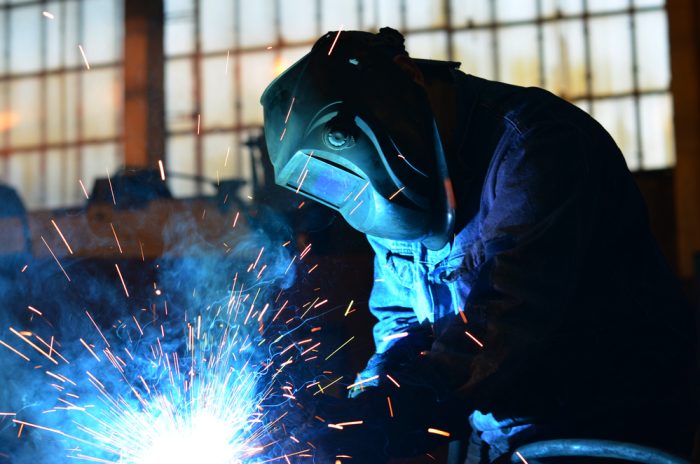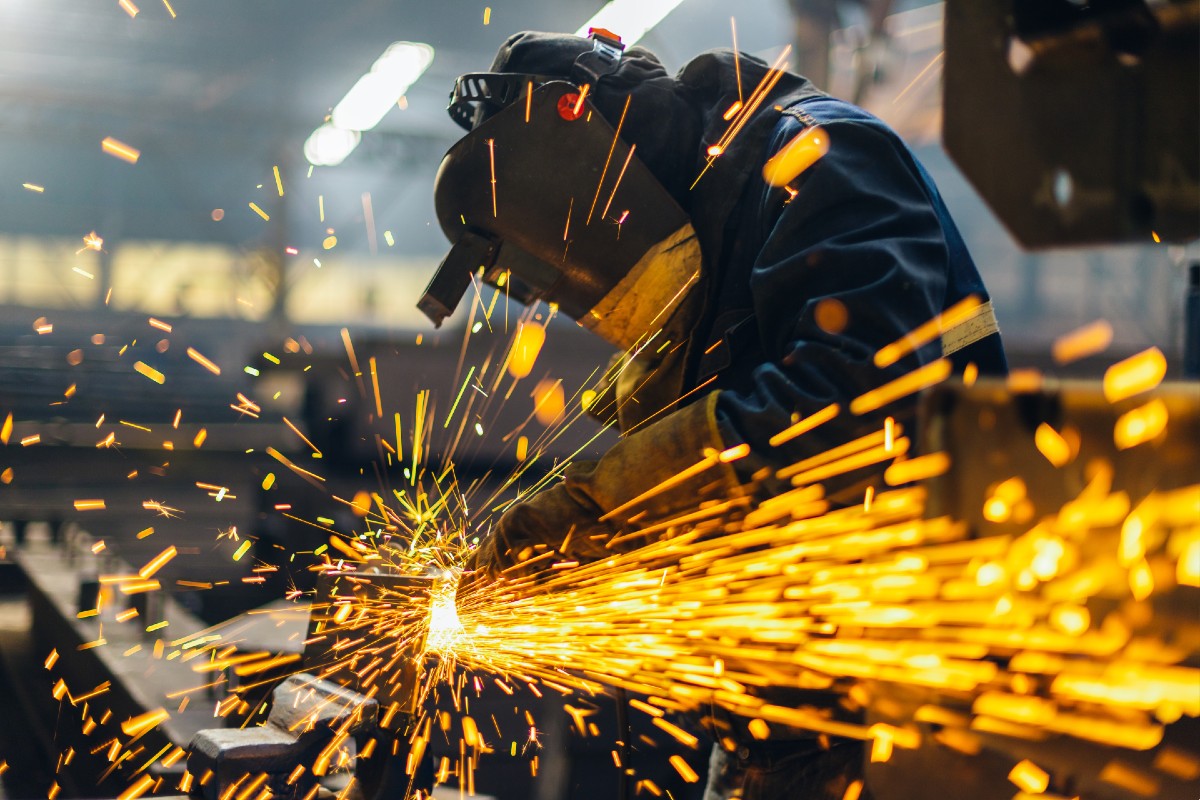Common causes of weld misalignment and Belgrade Fabrication’s methods
Wiki Article
All About Welding: Secret Insights Into Techniques and Finest Practices for Success
Welding encompasses a selection of strategies, each matched for specific products and applications. Recognizing these methods, such as GMAW, SMAW, and TIG, is vital for achieving optimal results. The appropriate equipment and safety practices can not be neglected. As preparation and repairing play vital duties in the welding procedure, understanding these components can greatly enhance the high quality of the end product. What are the key variables that guarantee a successful weld?Understanding Different Welding Strategies
Welding methods include a variety of methods, each fit to specific applications and products. Amongst one of the most typical strategies are Gas Steel Arc Welding (GMAW), Protected Metal Arc Welding (SMAW), and Tungsten Inert Gas Welding (TIG) GMAW, additionally called MIG welding, is popular for its speed and adaptability, making it suitable for thin materials. SMAW, or stick welding, is favored for its simpleness and efficiency in outdoor environments, especially with thicker metals. TIG welding uses accuracy and control, making it ideal for elaborate work and non-ferrous steels (Montana Mobile Welding and Repair Belgrade Welding). Each method has its special advantages and considerations, permitting welders to select the ideal method based upon the project's demands, product type, and preferred outcomes. Comprehending these techniques is crucial for effective weldingImportant Welding Devices and Tools
While different welding techniques require specific abilities, the right equipment and devices are equally essential for accomplishing quality results. Important welding tools includes welding devices, which differ depending on the technique-- such as MIG, TIG, or stick welding. Protective gear, consisting of aprons, gloves, and headgears, warranties security and comfort throughout the procedure. In addition, components and clamps help protect products in position, ensuring accuracy in welds. Consumables like welding rods, cable, and securing gas are likewise crucial elements that affect the top quality of the weld. Additionally, devices such as cutters and grinders promote surface area prep work and post-weld ending up, contributing to an expert end result. Investing in premium devices eventually improves the effectiveness and performance of welding projects.Security Practices in Welding
Proper safety techniques are essential in the welding industry to protect employees from prospective risks. Welders must wear proper individual safety equipment (PPE), including helmets with correct shading, gloves, and flame-resistant apparel. Appropriate ventilation is essential to minimize exposure to hazardous fumes and gases generated throughout the welding process. In addition, workers should be learnt the right handling of welding equipment to stop mishaps. Fire precaution, such as maintaining combustible materials away from the welding location and having fire extinguishers easily available, are needed. Routine evaluations of equipment and work areas can aid determine possible threats before they bring about accidents. By adhering to these safety and security methods, welders can develop a much safer working setting and minimize threats associated with their trade.Readying Materials for Welding
Preparing materials for welding is a vital action that considerably affects the top quality and stability of the end product (Belgrade). Proper preparation includes cleansing the surfaces to eliminate contaminants such as dirt, rust, and oil, which can compromise the weld. Methods such as grinding, sanding, or using solvents are frequently employed to attain a tidy surface area. In addition, guaranteeing that the materials fit together comfortably is vital; spaces can lead to weak welds. It's likewise important to think about the alignment and positioning of the elements, as this will certainly impact the ease of welding and the final end result. Choosing the appropriate filler material and making sure compatibility with the base metals is essential for attaining strong, resilient welds.Tips for Achieving High-Quality Welds
Attaining high-quality welds requires interest to information and adherence to best practices throughout the welding procedure. Correct joint preparation is essential, making sure surface areas are clean and totally free from impurities. Selecting the suitable filler material and welding method based on the base metals is important for suitable bonding. Preserving consistent travel speed and angle while welding can advertise and prevent problems harmony. Furthermore, managing heat input is essential; too much warm can lead to warping and damaged joints. On a regular basis inspecting the welds during the procedure permits for prompt modifications if essential. Employing ideal post-weld therapies, such as cleansing and stress alleviation, can improve the toughness and stability of the weld, eventually making certain an effective end result.Repairing Usual Welding Issues
Welding frequently provides obstacles that can affect the top quality and integrity of the last product. Typical problems such as porosity, inconsistent weld grains, and getting too hot can occur, each requiring specific repairing methods. Recognizing these troubles is necessary for welders to improve their skills and accomplish ideal results.Porosity Troubles Explained
Although porosity can commonly be forgotten, it stays a crucial problem in welding that can navigate to this site compromise the honesty of a completed product. Porosity refers to the existence of small gas pockets within the weld grain, which can lead and damage the joint to early failing. This trouble usually develops from contaminants, dampness, or improper shielding gas coverage during the welding procedure. To reduce porosity, welders must confirm that the base products are completely dry and clean, use suitable shielding gases, and maintain regular welding criteria. On a regular basis evaluating the tools and environment can likewise aid recognize potential issues prior to they manifest in the weld. Attending to porosity click here for info efficiently is crucial for achieving strong, durable welds that satisfy top quality criteria.
Inconsistent Weld Beads
Irregular weld grains can significantly influence the high quality and strength of a finished product. Numerous variables add to this issue, including improper traveling rate, wrong amperage settings, and inconsistent electrode angles. When the welder relocates too swiftly, a bead may show up slim and lack penetration, while moving also slowly can create excessive buildup. Furthermore, utilizing the incorrect amperage can result in either undercutting or extreme spatter, both of which concession weld integrity. The welder's strategy, such as irregular lantern motion, can also result in unequal grain look. To alleviate these problems, welders must concentrate on preserving stable, regulated activities and making sure correct tools setups to achieve uniformity in their welds. Uniformity is crucial to attaining trusted and solid welds.Overheating and Bending Issues
Too much warm during the welding procedure can result in significant overheating and warping concerns, influencing the architectural integrity of the work surface. These issues commonly show up as distortion, which can endanger placement and fit-up, making further setting up challenging. Factors adding to overheating include the option of welding criteria, such as voltage and travel speed, along with the kind of product being bonded. To minimize these problems, welders need to maintain consistent travel speed and ideal warm input while monitoring the work surface temperature. In addition, preheating or post-weld warmth treatment can help ease stress and anxieties triggered by rapid cooling - Belgrade Fabrication. Normal inspection and adherence to ideal methods are essential in protecting against getting too hot and guaranteeing the durability and integrity of bonded structuresOften Asked Questions
What Are the Profession Opportunities in the Welding Industry?
The welding market supplies diverse profession possibilities, consisting of positions as welders, designers, instructors, and examiners. Specialists can work in manufacturing, construction, aerospace, and vehicle sectors, taking advantage of strong demand and affordable wages in different functions.Extra resources
Exactly How Can I Boost My Welding Speed Without Giving Up Quality?
To boost welding rate without giving up high quality, one ought to exercise reliable methods, maintain devices, maximize settings, and boost hand-eye sychronisation. Regular training and looking for comments can additionally substantially add to accomplishing much faster, high-quality welds.What Accreditations Are Available for Welders?
Many certifications exist for welders, consisting of those from the American Welding Society (AWS), the National Center for Building And Construction Education And Learning and Research (NCCER), and different industry-specific organizations. These qualifications boost employability and show ability effectiveness.How Does Welding Influence the Features of Metals?
Welding affects the homes of metals by altering their microstructure, which can cause modifications in ductility, hardness, and toughness. Heat input and air conditioning prices throughout the procedure considerably influence these product attributes.Can I Weld Dissimilar Metals With Each Other?

Report this wiki page